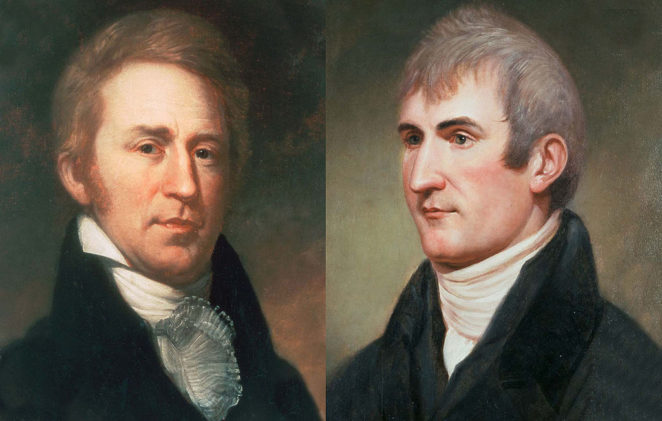
Lewis
and Clark were two explorers who were sent by President Thomas Jefferson to
explore the interior and west of the North American continent. Inadvertently,
they also made important contributions to the development of American English.
The
western adventure of Lewis and Clark
It
cannot be denied that American English exhibits many features that are peculiar
to it and which set it apart from other varieties of English spoken around the
world, noticeably that of the “home” country of English, namely the United
Kingdom.
This
expedition was made possible after the American government doubled its
territory in 1804 through the Louisiana Purchase, surely one of the best
bargains of all time. However, little was then known about what this new land
contained, whether it offered enticing prospects for development or dangers for
the unwary, whether the natives were friendly or hostile, and much else
besides.
The
journals of Lewis and Clark
For
the story of American English, the important thing to note is that Lewis and
Clark kept meticulous daily journals throughout their travels, at President Jefferson’s
insistence. On their return, these journals were published, becoming hugely
popular and widely read, and from them came a whole host of words that had
never been seen before.
Lewis
and Clark were not highly educated men, having spent much of their young lives
exploring the outback and fighting small campaigns against various native
tribes. Clark, who seems to have done much of the writing of the expedition
journal, was particularly conscious of his lack of skill as far as grammar and
spelling were concerned. It was, in any case, a time when spelling had not yet
been standardised by dictionaries such as Noah Webster’s which first appeared
in 1806.
New
uses for old words
The
journals therefore describe places, geographical features, animals, and much
else besides, in the best language that Lewis and Clark could manage. This was
partly due to their ignorance as a result of poor education but also from the
need to find names for the unfamiliar. For example, the word “creek”, which
means a tidal inlet in British English, was now used to mean any sort of
stream. The word “rapid” is an adjective, but it could do excellent service to
describe water moving rapidly over a rocky bed, as “rapids”.
When
Lewis and Clark had no word for something, they were apt to stick two words
together to create a new one. A snake which shook its tail to make a rattling
sound could best be described as a “rattlesnake”. A wood of trees bearing tufts
that looked like cotton gave rise to “cottonwood”. There are hundreds of such
examples in the journals.
Mistakes
and new words
Some
of the mistakes of modern American English can be laid at the doors of Lewis
and Clark, due to their lack of knowledge. The animal known to Americans as a
“buffalo” has no connection with the African or Asian animals of that name, as
what Lewis and Clark thought were buffaloes were in fact bisons, which are a
completely different species. The same is true of “elk”, which is not the same species
in Europe that it is in America.
On
their travels, Lewis and Clark came across several native American tribes and
picked up many names from them. Some 500 words in the journals are of native
origin, including “maize”, “opossum”, “hickory” and “toboggan”.
© John Welford
No comments:
Post a Comment